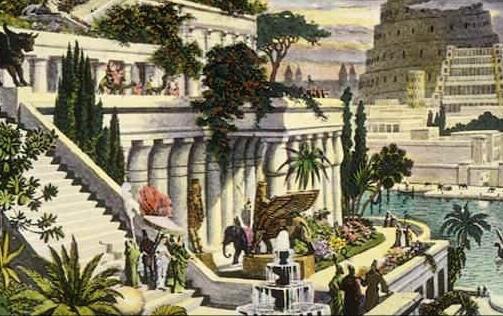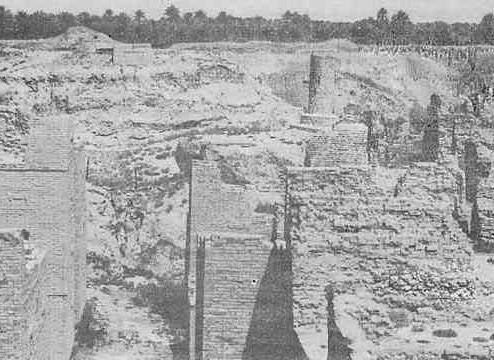There is an ancient legend that King Nebuchadnezzar II, deciding to please his wife Amitisse, ordered the construction of a large-scale structure in Babylon, consisting of terraces and ledges, on which trees grew in specially introduced soil. Fruits, flowers and greens created an atmosphere of bliss, reminding the queen of her homeland, Media, in a dusty and noisy state. There is no documentary evidence of this fact, although a lot of information has been preserved about the city itself. The fact that the hanging gardens in Babylon existed is indicated mainly by descriptions of Herodotus, who, however, lived much later than the events he described.

The Babylonian walls were high, but it is assumed that the structure was clearly visible behind them. Judging by the description of Herodotus, it rose one hundred meters. Building technologies of that time did not involve moving huge blocks of stone to a great height, but the ancient architects, apparently, managed to solve this problem and delivered the blocks. To give the design maximum aesthetics, tiling was applied with a relief pattern of turquoise and golden yellow colors. The vaults were supported by columns, which at that time was revolutionary technology for such massive structures. Thanks to them, this masterpiece of ancient architecture is also known as the "hanging gardens".

The irrigation system and waterproofing deserve special attention, without which the entire structure would lose all meaning. The remains of the foundation of an unknown but truly gigantic size found during excavations had holes in which, supposedly, Archimedes screws were placed , that is, screws that transported water from the Euphrates River to upper levels and activated by muscular strength. Leakage was not prevented by lead plates laid between bricks. Such complex and unusual compositions for the seventh century BC seem fantastic today. Many skeptics generally doubt that hanging gardens have ever existed. Other historians doubt their location. Thus, some researchers argue that such a structure could be built by the Assyrian king Sennacherib in the period from 705 to 681 BC. on the banks of the Tigris, and rumor attributed this achievement to ancient Babylon.

However, there are facts that speak in favor of the veracity of a beautiful ancient legend. In 1899, archaeologist Robert Koldeway discovered the remains of an ancient structure of colossal proportions in the place where this ancient city was located. The German scientist suggested that the foundations he discovered were the foundation of the Tower of Babel and something else very large. Having proved the existence of biblical Babylon, he hypothesized that there were also hanging gardens.
Even if we accept this version as the basis for further research, the name adopted to designate one of the wonders of the world remains a mystery. What does the hanging gardens of Babylon in Babylon have to do with Shammuramat, the founder of this city-state, who lived in the 9th century BC, that is, two centuries earlier than the period of the hypothetical construction of this complex engineering system that serves to please the royal Nebuchadnezzar and Amitissa? Maybe, even then, there was a tradition to name objects under construction in honor of famous people? And yet, according to the research and measurements of Koldevei, the dimensions of the terraces are significantly exaggerated, although they still remain impressive.